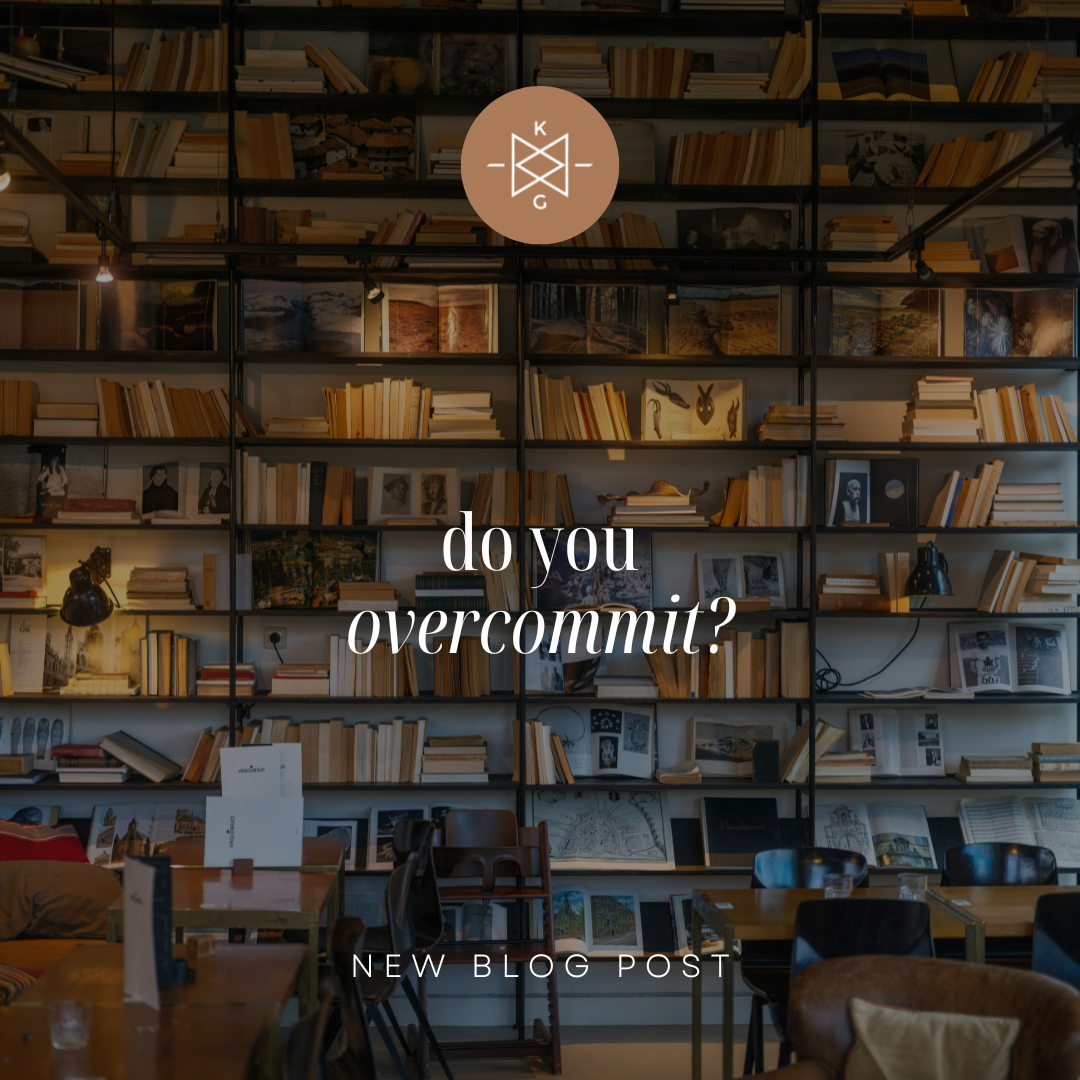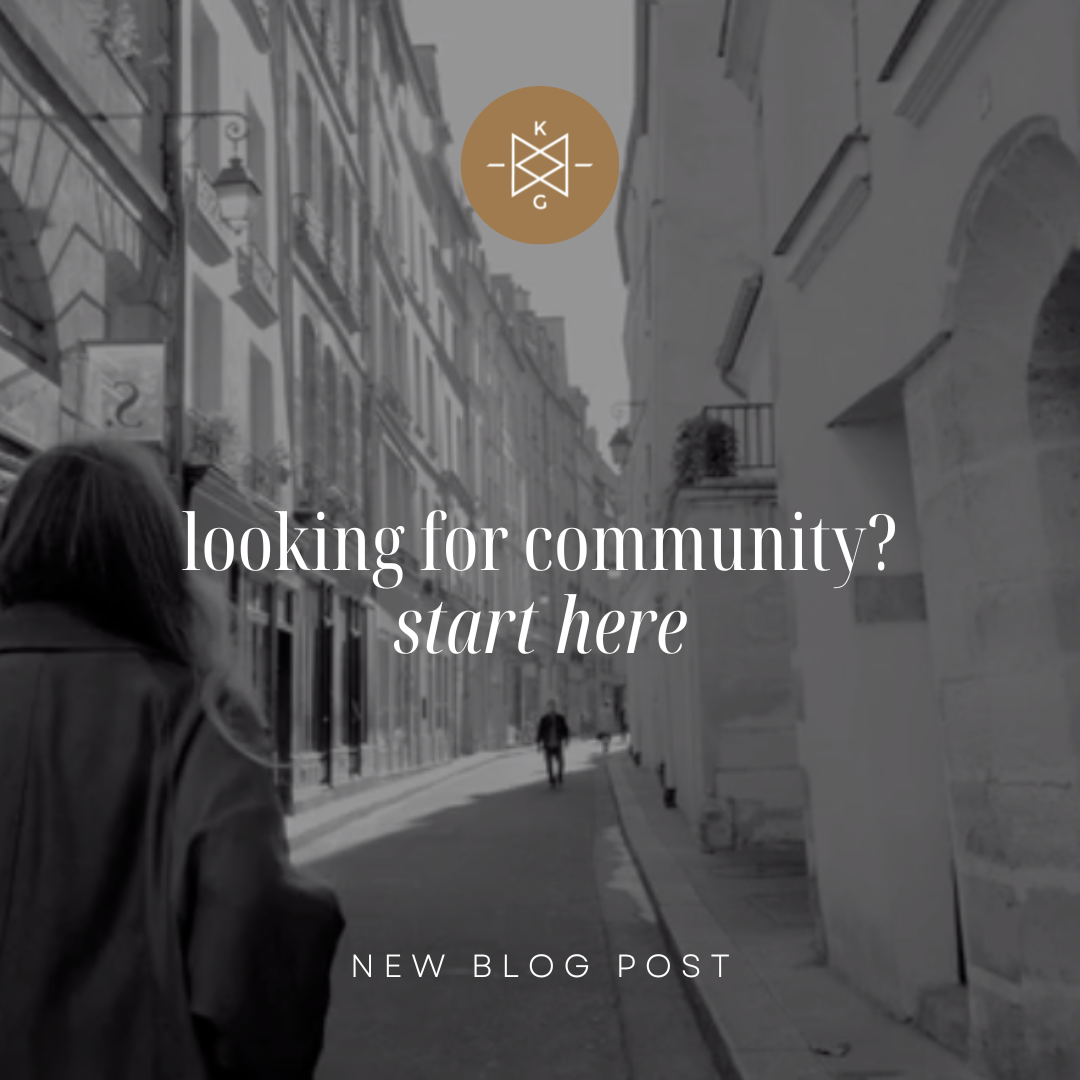
The Blog
Recently Featured
All Blogs
Do you overcommit?
“Be who God meant you to be and you will set the world on fire.”
-Catherine of Siena
As an executive coach and therapist, (and work in progress), I’m constantly amazed by how hard it is for us to do what feels so simple and obvious—to practice. It seems we are so focused on leading and managing external demands, we ignore the internal ones. Oh, but there’s a big difference between leading your life and merely managing it. I believe we close this gap by developing self-awareness through simple practices.
Chances are, if you’re reading blogs about the Enneagram, emotional health, and self-development such as this one, or have sought therapy at some point, you’re a leader. Why? Because you are actively participating in cultivating the hidden potential in your life. You’re finding your edge and sharpening it.
I like Brené Brown's definition of a leader in her book, Dare to Lead: “Anyone who takes responsibility for finding the potential in people and processes, and who has the courage to develop that potential.”
Sounds doable, right? Within reach? Without a doubt, I believe it absolutely is.
Hold up though. If you and I are going to be leaders, developing and speaking into the lives of others, don’t we first need to lead our own lives fairly well? Otherwise, we prop up a flimsy facade of ego and lack the deep roots of character and credibility necessary to sustain leadership from a place of truth and integrity.
It’s the perfect opportunity to connect to the potential bubbling up under the surface and lead from a place of intention instead of reaction. How do we do this? I’m convinced the unsexy truth is we get really good at practice.
Practice what??
I’ve got three uber simple rituals for you to practice this week.
First thought: When your eyeballs pop open first thing in the morning, guess what? A first thought also starts to percolate. That first thought has the power to steer your day either north to abundance, or south, to scarcity. You have creative license to craft that thought, coloring the trajectory of your day. If that thought is, “I’m just so tired and didn’t get enough sleep.” Guess which direction your headed? Yep…going south. You’re in the driver’s seat though, so take a minute, first thing in the morning, to carefully choose the thought that will direct your day in the right direction. The scenery is much better on this route, I promise.
Gratitude: Throughout the day, take three one-minute breaks and identify at least one thing you are grateful for in the moment. Meal times are ideal to practice this as we (hopefully) slow down and hop off the treadmill of our day. The goal here: keep them simple (i.e. lungs that work, food to eat, a new day, a job or hobby, a dear friend.)
Belly-breathing: It’s fascinating to me that as a culture, we largely suck at breathing. Our overall vitality and quality of life immediately improves when we practice deep, steady breathing. But guess what? We’re just. so. damn. busy. I’m calling BS on busy. For at least one minute each day, practice slow, belly-breathing. Breathing into our belly, or body’s center of intelligence, brings a tangible feeling of groundedness. Place your hand on your belly and feel it rise and fall, like a cashed-out kid at naptime. We’re often so disconnected from our bodies, which stunts us from experiencing the fullness of each moment. Belly-breathing is the quickest way to connect us back to presence and the intelligent knowing of our bodies.
If these seem too pedestrian—or basic, for you as you step into CEO of YOU, guess what? Get over it. Tough love, my friend. The best musicians in the world got that way because they nailed the basics, and still practice them. We’re all guilty of getting in our own way by not practicing what we preach. My challenge to you is this: have the courage to do the small things that lead to big change. Inspire yourself so much that others start to lean into your light and see themselves in a new, empowered way. I’m pretty sure that’s called an icon…
How do you lead?
“One isn’t necessarily born with courage, but one is born with potential. Without courage, we cannot practice any other virtue with consistency.”
-Maya Angelou
As an executive coach and therapist, (and work in progress), I’m constantly amazed by how hard it is for us to do what feels so simple and obvious—to practice. It seems we are so focused on leading and managing external demands, we ignore the internal ones. Oh, but there’s a big difference between leading your life and merely managing it. I believe we close this gap by developing self-awareness through simple practices.
Chances are, if you’re reading blogs about the Enneagram, emotional health, and self-development such as this one, or have sought therapy at some point, you’re a leader. Why? Because you are actively participating in cultivating the hidden potential in your life. You’re finding your edge and sharpening it.
I like Brené Brown's definition of a leader in her book, Dare to Lead: “Anyone who takes responsibility for finding the potential in people and processes, and who has the courage to develop that potential.”
Sounds doable, right? Within reach? Without a doubt, I believe it absolutely is.
Hold up though. If you and I are going to be leaders, developing and speaking into the lives of others, don’t we first need to lead our own lives fairly well? Otherwise, we prop up a flimsy facade of ego and lack the deep roots of character and credibility necessary to sustain leadership from a place of truth and integrity.
It’s the perfect opportunity to connect to the potential bubbling up under the surface and lead from a place of intention instead of reaction. How do we do this? I’m convinced the unsexy truth is we get really good at practice.
Practice what??
I’ve got three uber simple rituals for you to practice this week.
First thought: When your eyeballs pop open first thing in the morning, guess what? A first thought also starts to percolate. That first thought has the power to steer your day either north to abundance, or south, to scarcity. You have creative license to craft that thought, coloring the trajectory of your day. If that thought is, “I’m just so tired and didn’t get enough sleep.” Guess which direction your headed? Yep…going south. You’re in the driver’s seat though, so take a minute, first thing in the morning, to carefully choose the thought that will direct your day in the right direction. The scenery is much better on this route, I promise.
Gratitude: Throughout the day, take three one-minute breaks and identify at least one thing you are grateful for in the moment. Meal times are ideal to practice this as we (hopefully) slow down and hop off the treadmill of our day. The goal here: keep them simple (i.e. lungs that work, food to eat, a new day, a job or hobby, a dear friend.)
Belly-breathing: It’s fascinating to me that as a culture, we largely suck at breathing. Our overall vitality and quality of life immediately improves when we practice deep, steady breathing. But guess what? We’re just. so. damn. busy. I’m calling BS on busy. For at least one minute each day, practice slow, belly-breathing. Breathing into our belly, or body’s center of intelligence, brings a tangible feeling of groundedness. Place your hand on your belly and feel it rise and fall, like a cashed-out kid at naptime. We’re often so disconnected from our bodies, which stunts us from experiencing the fullness of each moment. Belly-breathing is the quickest way to connect us back to presence and the intelligent knowing of our bodies.
If these seem too pedestrian—or basic, for you as you step into CEO of YOU, guess what? Get over it. Tough love, my friend. The best musicians in the world got that way because they nailed the basics, and still practice them. We’re all guilty of getting in our own way by not practicing what we preach. My challenge to you is this: have the courage to do the small things that lead to big change. Inspire yourself so much that others start to lean into your light and see themselves in a new, empowered way. I’m pretty sure that’s called an icon…
Looking for community? Start here...
“The way you get meaning into your life is to devote yourself to loving others, devote yourself to your community around you, and devote yourself to creating something that gives you purpose and meaning.”
When was the last time you really felt seen? Heard? When do you get to be squishy and vulnerable and feel the support of a loving, like-minded group? Where do you feel a deep sense of belonging?
If you had a shaky response to any of the above, consider this your invitation for more.
I became a therapist because I’d been a client my whole life. I wanted to meet people in the sacred and liminal spaces I’d been met by countless brilliant teachers (aka therapists.) About six years ago, I decided to go beyond the one on one work and offer this healing space to a group of women who loved the Enneagram almost as much as I did :) It’s not group therapy. And it’s not just lunch. It’s the Enneagram Mastermind and here’s a bit of what we explore:
The basics of the Enneagram, a powerful personality typing system
Your unique type and subtype
The motivation behind how you think, feel, and act
The story you’ve been living out of—and—is it really working?
The beauty and safety of sharing our stories
A deeper connection to self and others
A lot of laughter and fun
A delicious lunch :)
Also, you will develop some incredible, lasting friendships. Here’s a testimonial from Courtney, one of my OG Mastermind members.
Are you ready to take your Enneagram experience to the next level? Are you ready to feel the power of connection in community? Okay then…here’s your personal invitation. Join me this March 5 from 12-2pm for our kickoff in Brentwood TN.
I can’t wait to know you better real soon ;)
Why I fell in love with the Enneagram
“No prison is more secure than the one you don’t know you’re in.”
-William Shakespeare
I first learned of the Enneagram in 2006. My boss at the time kept talking in numbers and I felt incredibly curious if not left out of some grand, who’s who party. She was convinced I was a two. What does that even mean? What’s a two? And why not a seven? Even numbers are boring.
Whereas I had deep respect and trust for this woman, deep down, I simply couldn’t stomach the idea that I could be reduced to a number. This felt far too pedestrian, or boxy for the likes of me. I didn’t know it then, but I soon learned, this was the first clue I was not in fact a two, but a four, the Romantic.
I left work that day and ordered the only book I knew on the subject. The Enneagram: A Christian Perspective, by Richard Rohr and Andreas Ebert. I devoured that book like a marathon runner carb-loading before race day. Throughout the next several years, it became something of a Bible and an oxygen tank for me.
I won’t lie. For the first couple of years, I was “that girl” who’d try and type you in the Starbucks line. I’m pretty sure my friends and family were ready to issue a restraining order if I mentioned those damn numbers one more time. For this dogmatic behavior, I do apologize.
Here’s the thing though. We are all zealots in love during the honeymoon phase. All we want to do is talk about this flawless person (or system in my case) that can do no wrong and smells amazing. However, I believe true love far outlasts the honeymoon phase, deepening and morphing into what comes to feel like home.
Fast forward nearly two decades. I’m still in love with the Enneagram. As a wife, mom, psychotherapist, writer, teacher, and host, I can honestly say it’s the baseline I come back to for grounding and consistent insight amidst a world spinning on its head. It reminds me who I really am before I put on all those other hats. It continuously, graciously, calls me home to the truth of who I am.
The Enneagram is transformational, if we put it to good use. When I first discovered it, I had been battling intense depression, anxiety, and insomnia for years. I’d always sensed I was the odd man out who showed up underdressed and a day late to the Met Gala or something.
Shame was the pervasive emotion lighting the landscape of my experience as was an intense longing for a sense of completion—of meaning—to finally make herself known. I desperately wanted to be seen and known, as do all of us. My longings took the shape of self-destructive and melancholic tendencies. So much so that if I were to become “normal” or well, I might not have any identity at all.
The first time I read about type Fours, I literally cried. They were tears of joy and relief. Perhaps the despair and deficiency I’d known all along wasn’t what was wrong with me, but what was right with me because it pointed me towards a truer, bigger story of grace and compassion. What if…I wasn’t Crazy after all? Gasp.
Understanding my Enneagram type gave me an unspoken yet familiar language with which to relate to myself with kindness and compassion after the relentless self-loathing I’d been marinating in most my life.
This didn’t happen overnight. It’s been an ongoing process I’ll proudly be on for a long time. Yet the first step felt like one off a quickly sinking ship. Perhaps the biggest relief of all was that I was not in fact, alone. My story wasn’t haphazard. There was a clear path to take that would lead me each day a bit closer to home and the love and acceptance I longed to give myself.
I’ve worked with thousands of clients in my work as a psychotherapist, and I’ve been amazed by the pervasive nature of low-self worth and acceptance. I’ve found 98% of humans have a loud and nagging inner critic that won’t let them off the hook. In fact, this relentless critic is like a highly-introverted roommate, we barely even realize she’s there. After all, it is far easier and more socially encouraged to treat others with kindness than it is to show ourselves that same level of respect.
In my observance, a big reason we don’t allow ourselves the benefit of self-compassion to begin with is because we’ve been conditioned to hide or judge certain parts of ourselves that we or someone important to us has deemed unacceptable early on. If we were to connect to and love those parts, we wouldn’t be safe. Suffice it to say, the stories we come to believe about ourselves as children helped us survive and show up in the world. Survival is serious business. And we were brilliant in our survival strategies as kids.
If you’re ready to step into the bigger picture of you and edit those old wobbly narratives, I’d love to be your guide.
Transform your relationship with the Enneagram
“Our relationship to self is what determines the kind of relationships we will allow, engender, and cultivate with others. Understanding our self is what leads to understanding others. Intimacy with self, to a great degree, determines our capacity for true and lasting intimacy with another — psychological, emotional, physical and spiritual.”
-David Daniels, M.D.
Valentine’s Day is right around the corner, as is my Valentine’s Enneagram Dinner, this coming Saturday! (Bring your special someone if you’re free!) So, I thought I’d share with you some of my favorite ways the Enneagram has supported my marriage.
Thankfully, I’d known about the Enneagram long before I got married, however, as I’ve devoted myself to it as a student and practitioner, I’ve been able to really put it to good use within the context of my relationships.
My ever-patient husband, Daniel, was quickly introduced to the Enneagram on…let’s say…date two. I didn’t want to scare him away on number one. So out of the gate, I’m sure he was one part amused and two parts annoyed that someone was trying to figure him out to this degree.
Initially, I thought he was a Type One, the Perfectionist, due to his keen attention to detail, how highly people spoke of his character and integrity, his desire to constantly improve things around him, and….you guessed it… his heartfelt “suggestions” for my dishwasher loading non-skills. Apparently, there was a glaring right way to do it and I was not hip to it.
Ahhh, but then several months later, while reading Beatrice Chestnut’s 9 Styles of Enneagram Leadership aloud to him on an overcast Sunday afternoon, (I know…so romantic), he resonated strongly with the social Type Nine. Not totally convinced, I went along with it.
As a flaming Type Four, I was just tickled pink he humored my deep Enneagram enthusiasm. I felt seen and dare I say, understood? Gasp.
A few years later, (yes, sometimes it takes that long to figure it out folks), he tagged along with me to an Enneagram conference for therapists I was teaching in D.C. After a morning of total immersion, we were heading to celebratory lunch.
In his understated way, he dropped a bomb on me. “So, I’m pretty sure I’m a Five (the Observer), not a Nine.”
!?!?!?!?!?!?!?!?
After a stunning aha moment and some long and slow breaths, it started to make sense. “How could I have missed this?” I muttered. I had to sit with this new insight for weeks, but eventually it all checked out. While I don’t have time and space to unpack it all here (book coming soon!), suffice it to say, so many holes in the story of our relationship got filled in with understanding and compassion where there had been confusion and often hurt.
It helped me heal some Type Four insecurities I’d carried into the relationship that initially became worse due to his lack of verbal affirmation. I wanted a gusher. I got a strong, silent type. My head took up serious real estate in the clouds. He was ever grounded in practicality.
I never doubted his love for me, yet my perceived feeling of his withholding was actually him preserving time, energy and emotion in step with his Type Five tendency.
Type Fives live for knowledge and mastery. Now it made sense he knew all the things about all the things!!! Why he loved spending time (alone) reading instruction manuals—pouring over books about succulents, the Battle of Nashville, recording gear, obscure facts about the Beatles, and how to build the most energy efficient tiny house in the woods. His favorite show is How It’s Made for Pete’s sake!
Beyond all those character traits, what really struck me was the story of Type Five’s—his why—that explained so much.
So, here are three ways it really helped us:
The Enneagram revealed the obvious nature of how differently we saw the world. I’m a Four and Daniel is a Five. This hit home that our respective ways of seeing and moving through the world were not necessarily normal—but different. A slow meditation in humility if you ask me.
To draw on attachment styles in relationship, we learned we both had avoidant styles of conflict as Fours, Fives, and Nines are all withdrawing types. So, when the stresses of marriage mounted, we withdrew instead of assertively addressing the issue at hand. This could become a pressure cooker for resentment if we weren’t aware of what was happening.
Part of “doing the work” of marriage requires committing to the study of your partner’s Enneagram type in order to fully understand how and why they think, feel, and act in the world, as well as how they show up in relationships. I am now extra super well-versed in all things Type Five. :)
BONUS: Don’t forget…It’s crucial to understand the suffering of each other’s type. This identifies the early wounds the defensive structure of our personalities were built around in order to survive. It also provides information around what triggers stress and insecurity in each other.
If you’re interested in using the Enneagram as a tool in therapy with your spouse or partner, I’d love to support you. It’s not a magic pill, but it is a game-changing blueprint with which to build a loving relationship.






























